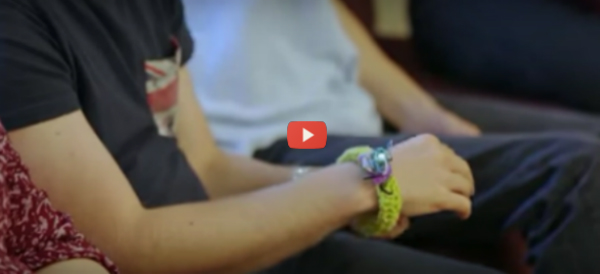Passive wearable health tech to sense, measure, monitor, and store data may be useful in addressing anxiety problems. Researchers at the Lancaster University’s School of Computing and Communications, however, took a new approach. Rather than use a device that measures biometric changes, Human Computer Interaction specialists at the school devised a personalized wearable.
Called “Snap,” the Lancaster University wearable concept involves the subject who will wear the wristband in its actual design and construction. Snap starts with an Arduino-compatible RFDuino micro controller. Users can 3D print customized pods to hold the computer unit. Finally, the subject can weave, braid, or otherwise create the band that holds it. When a Snap wearer stretches the wristband, the microcomputer unit captures that data and stores it on the device itself. No cloud storage is involved. Later the data can be downloaded directly to a computer.
In observing people with anxiety disorders and autistic people in group settings, the researchers realized that fidgeting with clothing or playing with things with their hands was often a sign of anxiety or discomfort. Part of the idea behind Snap lies in helping the subjects and in some situations case workers or other people around them to recognize when anxiety builds. As an unexpected side benefit, the researchers found that involving the volunteer subject in designing and building their own Snap unit was therapeutic. Using fidgeting and playing with Snap with their hands as an overt topic also helped subjects talk about their anxiety.
Future research directions include refining the prototype designs. The team also intends to develop an app or online platform on which to record and store reflections and observations about what was going on when the snapping started.


